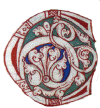 omparative
omparative
 omparative
omparative
Final Examination
Due date: Graduating Law Students: May 12, 2002
Non-Graduating Students: May 15, 2002
Nota bene: I have to turn in my grades for graduating students (congratulations!) by May 15th. That means that you and I have no wiggle room for the May 12th deadline.

1. In the medieval Ius commune, case law was based solely on the decisions of the highest appeals court, the Roman curia. Discuss the beginning of papal decretal legislation. Illustrate how decretals were used in the law schools and in the classroom. Give one illustration of papal jurisprudence influencing the practice of law in the secular law (Ius proprium) (10 points).
2. Outline the progress of legislative doctrine from "all law is custom" to "all law resides in legislative institutions." Discuss the practice of legislation in twelfth-century England and compare English practice to the continent (10 points).
3. The modes of proof in European courtrooms took two different paths after 1100. As ordeals became more suspect and then obsolete after 1215, one path followed the procedure of Romano-canonical procedure, the "Ordo iudiciarius," that had emerged in the twelfth century and the other path developed modes of proofs based on Germanic conceptions and practices. Describe these two types of procedure and discuss the reasons why two different systems of proof were instituted in European legal systems (10 points).
4. Discuss how jurists in the medieval and early modern periods created legal norms that favored individual rights. Give at least four examples of the norms that they created and the rights that these norms justified and protected --- my essays on rights are necessary reading for this question (10 points)!
5. Compare and contrast all the examples of compilations of laws and of codification that we has discussed this semester. What are the strengths and weaknesses of codes? How did these codes reflect the relationship of law to human beings and to the state (10 points)?
6. Compare and contrast the three themes of this course, 1. codification and legislation, 2. procedure, and 3. the role of jurists, in modern common and civil law. Point out to what extent the history of law helps us to understand how modern common and civil law evolved and explain the characteristics of each system (10 points).
Write an essay covering each of these points. It should be typed, double-spaced, and proofread. The margins of the essay should be one inch on each side and the font size should be 12 point. Be sure to paginate the final typescript. In the essay, each new section should have a number corresponding to the above sections.